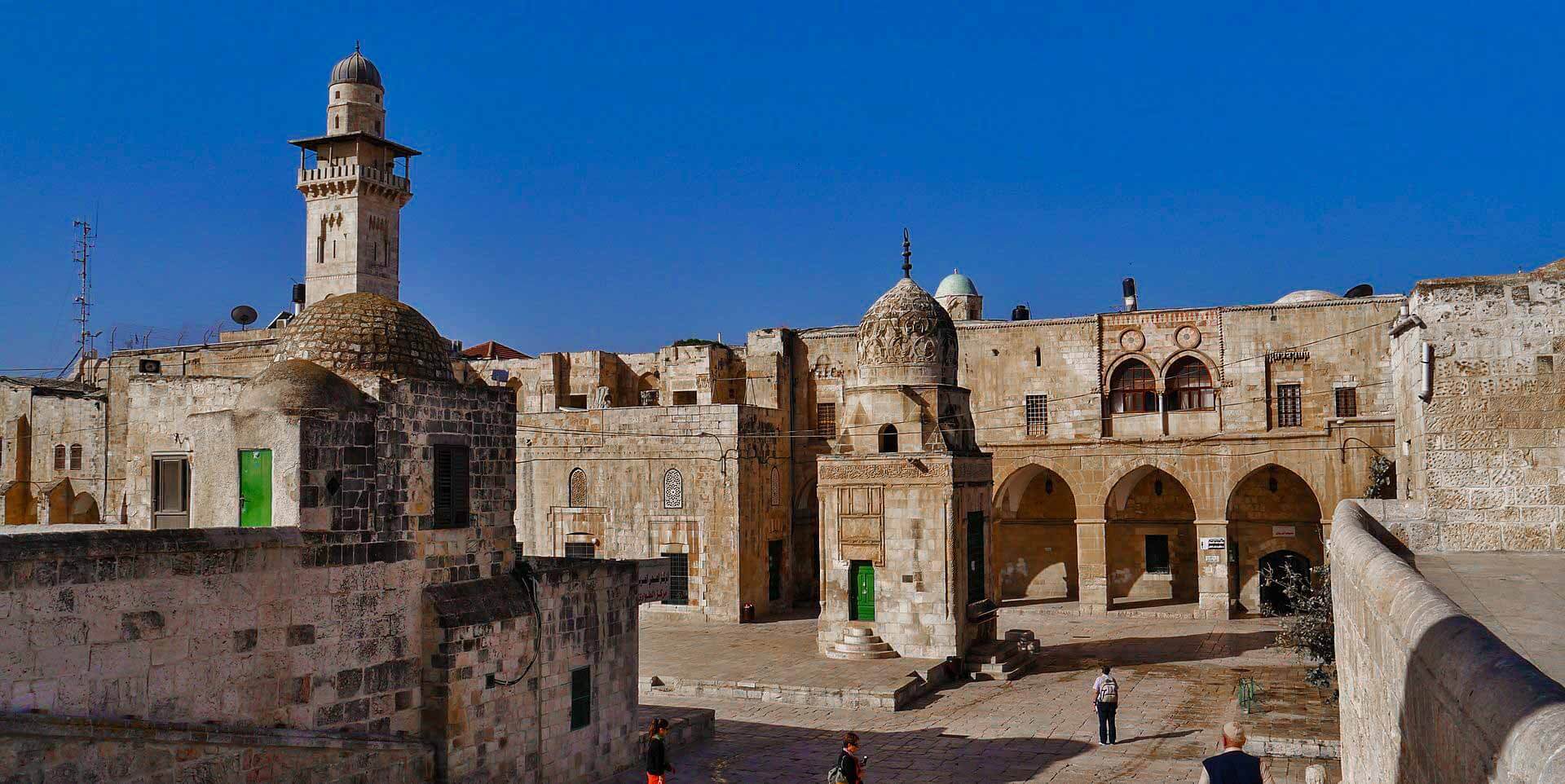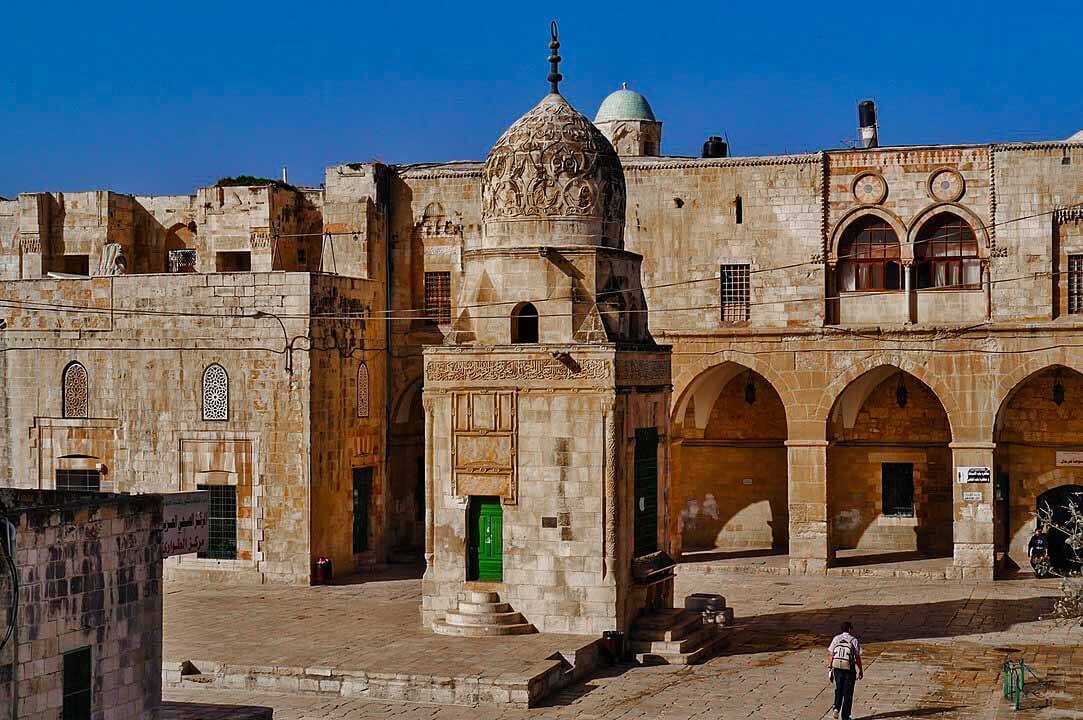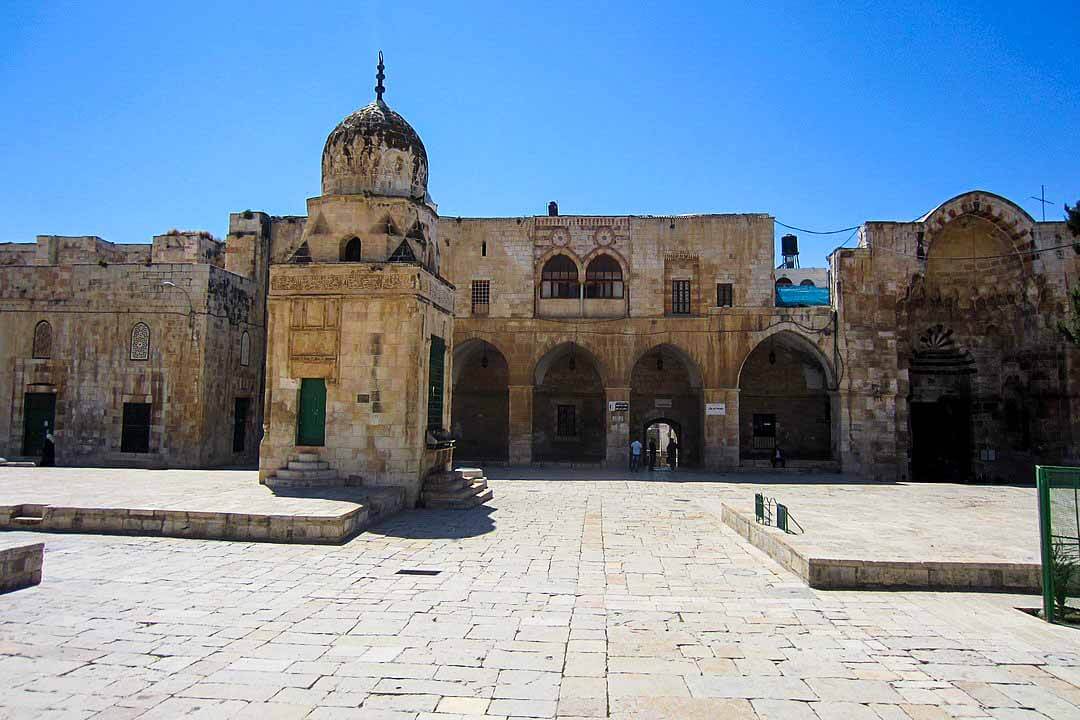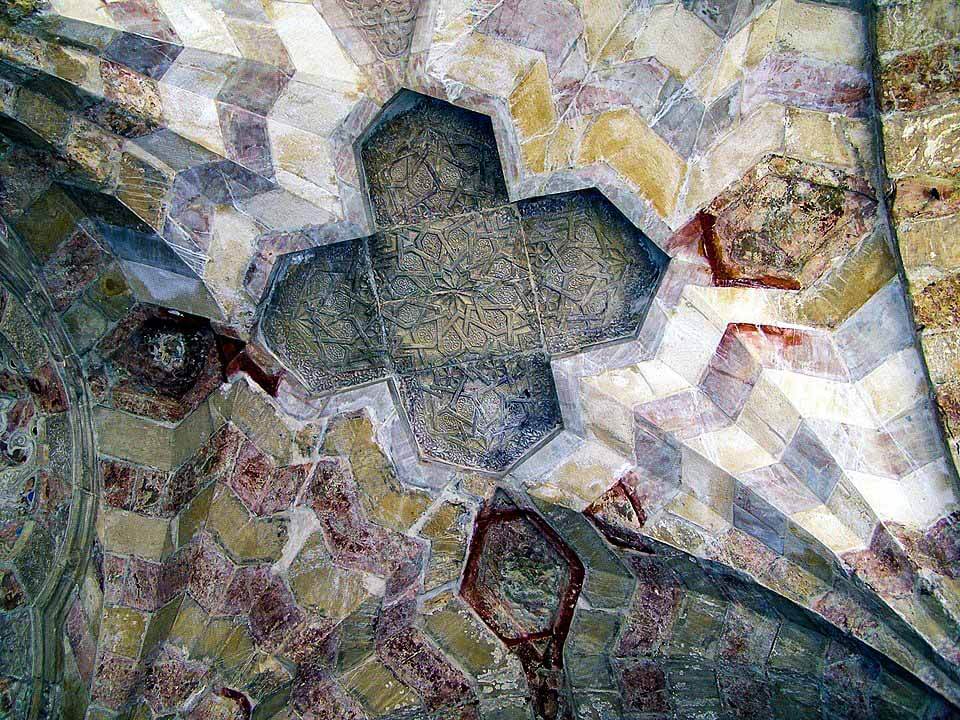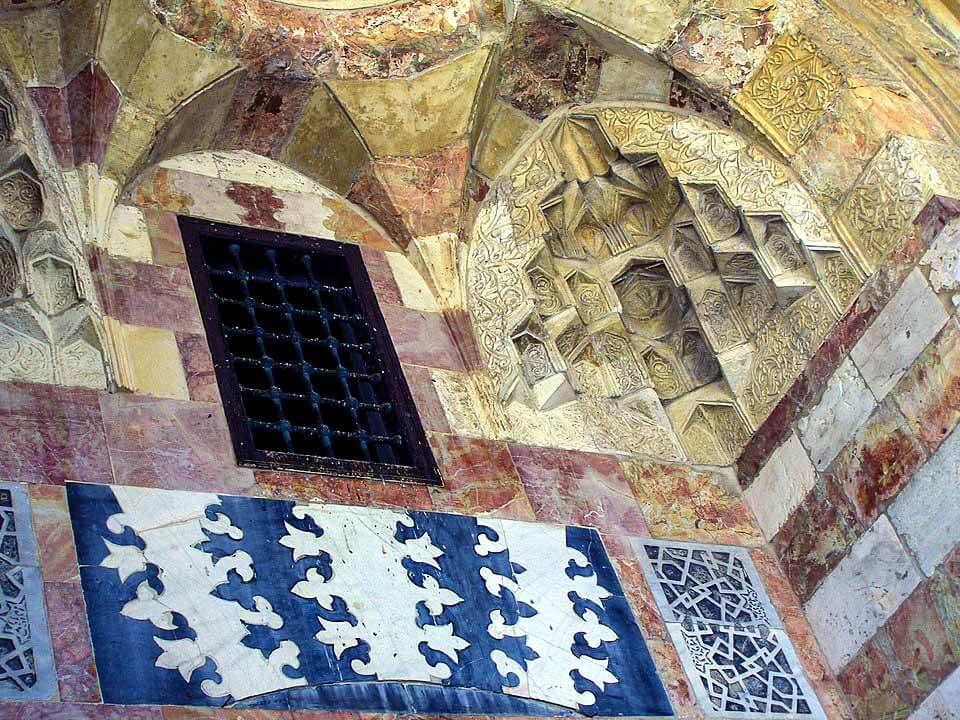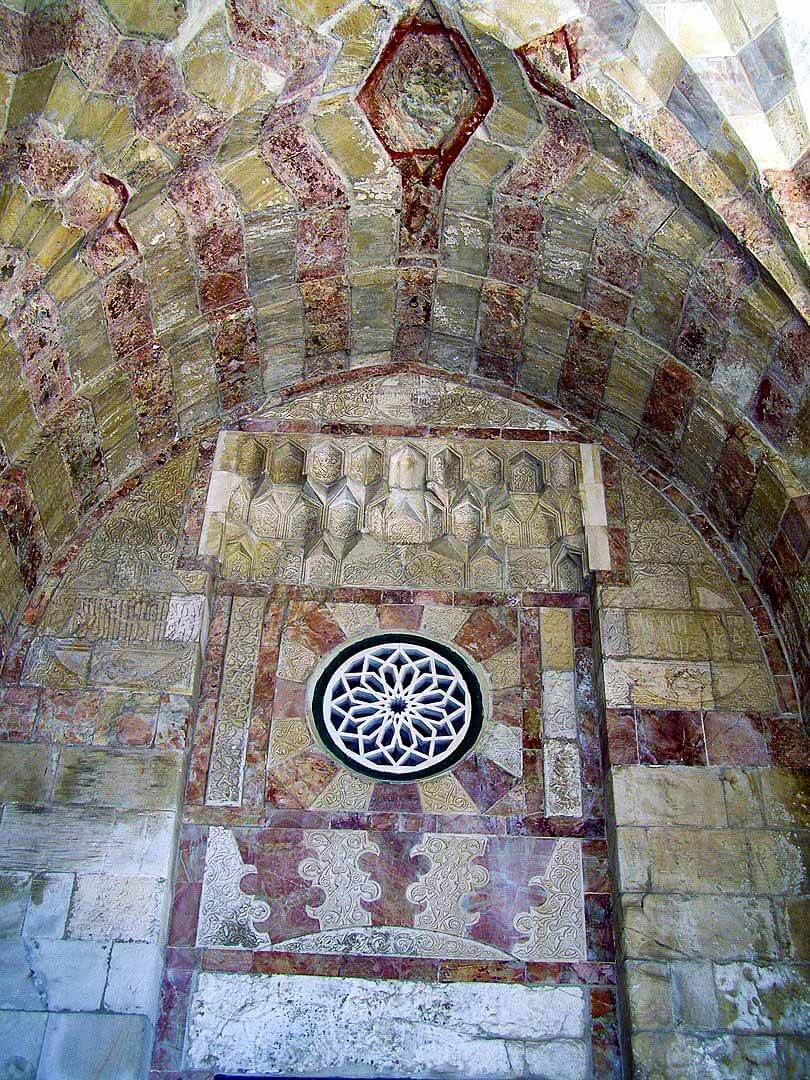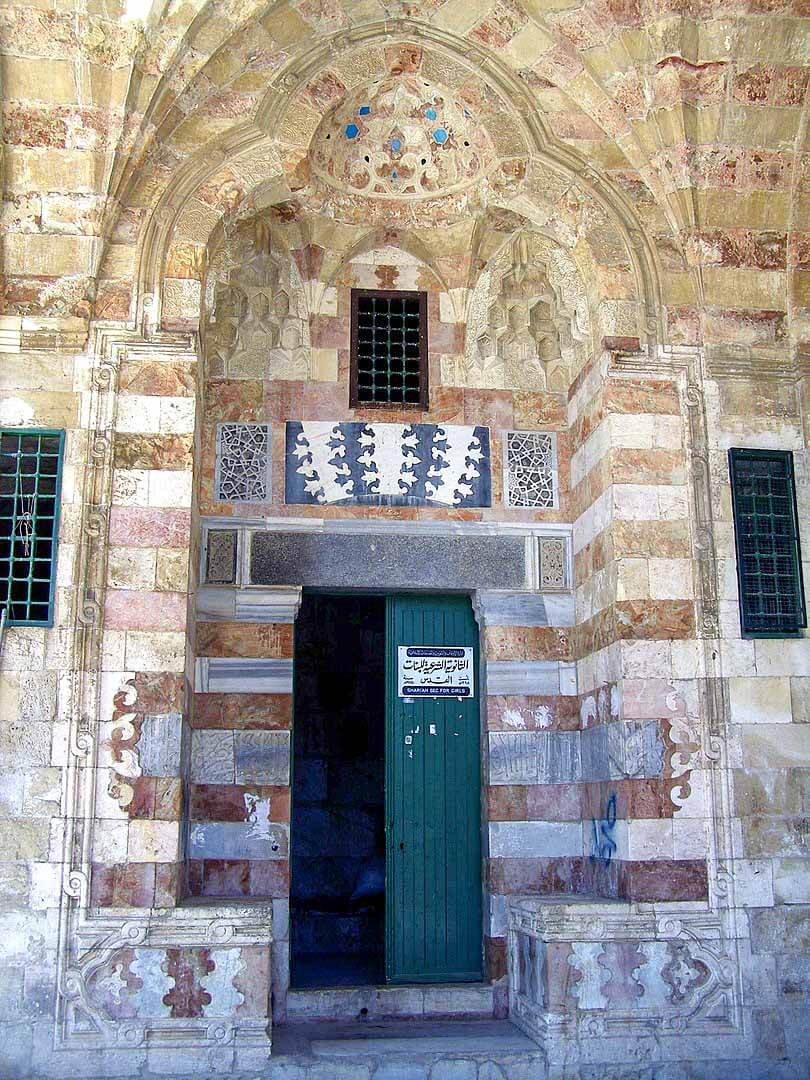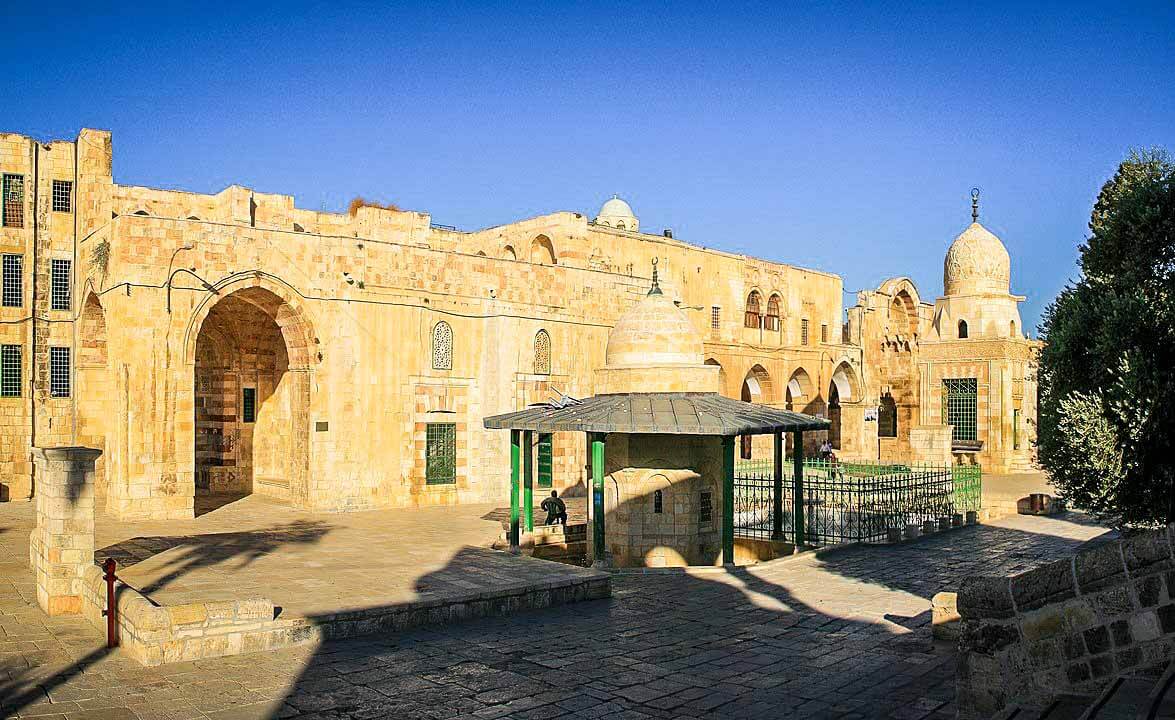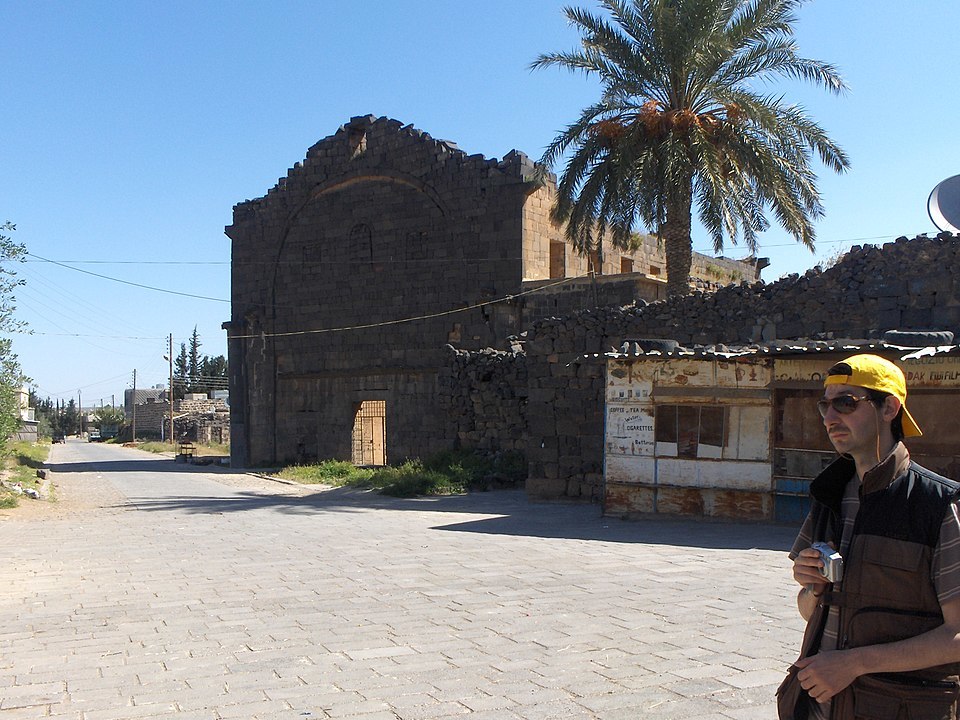Haram Ash sharif Complex, Jerusalem
Coordinates: 31.777533, 35.234333
The Madrasa Al-Ashrafiyya is an Islamic madrasa structure built in 1480-1482 by the Mamluk sultan al-Ashraf Qaytbay (after whom it is named) on the western side of the Haram al-Sharif in Jerusalem.
Although only a part of the original structure is still standing today, it is a notable example of royal Mamluk architecture in Quds.
Al-Ashraf Qaytbay was one of the last powerful and successful sultans of the Mamluk Empire which ruled from Cairo, Egypt.
He was originally a mamluk purchased by Sultan al-Ashraf Barsbay (ruled 1422–1438) and served under several Mamluk sultans.
Qaytbays new madrasa was built between 1480 and 1482 CE. As Qaytbay estimated that local craftsmanship did not live up to his standards, he commissioned a team of builders and artisans, including a Coptic architect from Cairo to work on this project.
This marks a relatively rare occasion where a Mamluk sultan commissioned a construction project of such significance outside of Cairo.
Just three months after the completion of the madrasa, Qaytbay then ordered the sabil (fountain house or water dispensary) to its northeast to be rebuilt, resulting in the Sabil of Qaytbay still standing there today.
A strong earthquake destroyed much of the upper floor of the madrasa in 1496. Today, only parts of the lower stories have survived, but the original structure is known thanks to extensive contemporary documentation and modern-day investigation of its remains.
According to Mujir al-Din al-Ulaymi, who was a historian at that time, it is a third jewel of Masjid Bayt al-Maqdis (Al-Haram Al- Sharif) after al-Aqsa Mosque and the Dome of the Rock.


